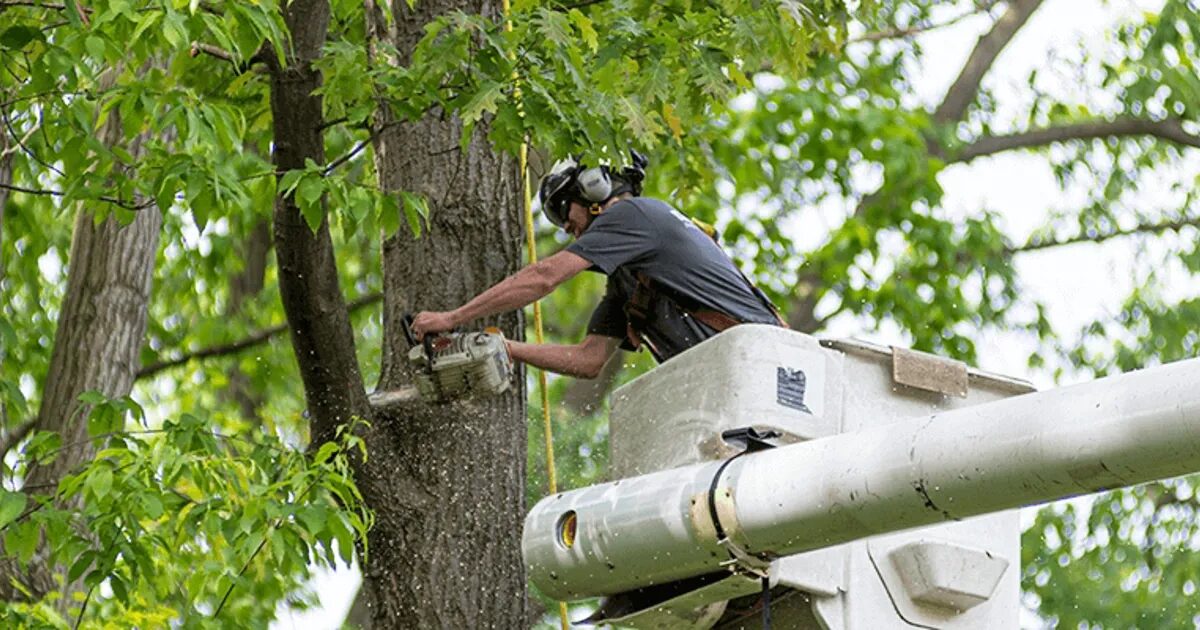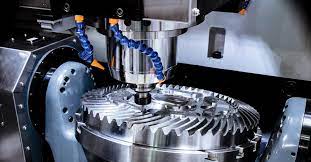CNC Machining Tips: The Secret to Success When 5 axis CNC Machining
5-Axis CNC Machining Process
Ever wondered what sets successful CNC machining projects apart? When it comes to 5-axis CNC machining, there’s more to it than just having a fancy CNC machine. This technology, which allows the cutting tool to move in five different directions, is a game-changer for creating complex parts with incredible precision.
But mastering 5-axis CNC machining requires more than just pushing a button. It involves strategic planning, meticulous programming, and skilled operation. In this article, we’ll discuss the essential tips and tricks that can help you unlock the full potential of your 5 axis CNC machining technique, ensuring you get the best results every time.
Contents
How Does 5 Axis CNC Machining Work?
Before we go into the tips and tricks, let’s get a quick rundown on how 5-axis CNC machining actually works. Imagine having the freedom to move the cutting tool in five different directions—this flexibility is what makes 5-axis machining a game-changer. Unlike traditional 3-axis CNC machines, which move in three directions, 5-axis CNC machining incorporates two additional rotational axes, enabling the tool to approach the workpiece from virtually any direction.
Here’s a detailed breakdown:
- X, Y, and Z Axes: As with 3-axis machines, the tool can move up and down, left and right, and forward and backward.
- A Axis: This is a rotational axis around the X-axis, allowing the tool to tilt forward and backward.
- B Axis: This is a rotational axis around the Y-axis, enabling the tool to tilt side to side.
This expanded range of motion offers significant advantages:
- You can create intricate shapes and designs that would be challenging or nearly impossible with a 3-axis machine.
- You get better product surface finishes as there is less need for multiple setups.
- It increases efficiency by minimizing repositioning and recalibration time.
In practical terms, operating a 5-axis CNC machine involves several steps to ensure precision and efficiency. Here’s how it typically works:
- Design and CAD Modeling: The process begins with designing the part using Computer-Aided Design (CAD) software. This digital model includes all the detailed specifications and dimensions of the part you want to create.
- Generating G-Code: Once the design is complete, the next step is to convert this model into G-code using CAM (Computer-Aided Manufacturing) software. G-code is the language that CNC machines understand, providing instructions on how to move the cutting tool. The CAM software generates toolpaths, which dictate the movements of the machine’s axes, ensuring precise cuts.
- Machine Setup: Before starting the machining process, it’s crucial to set up the machine correctly. This involves securing the workpiece using appropriate fixturing to prevent any movement during machining. Proper calibration of the machine is also necessary to ensure accuracy.
- Loading the G-Code: The generated G-code is then loaded into the CNC machine’s controller. This controller interprets the code and directs the machine’s movements.
- Running the Machining Process: With everything set up, you can begin the machining process. The machine follows the G-code instructions, moving the cutting tool along the designated paths. In a 5-axis machine, the tool can approach the workpiece from multiple angles, allowing for complex cuts and intricate designs.
- Monitoring and Adjustments: Throughout the machining process, the operator monitors the machine to ensure everything is running smoothly. Any necessary adjustments can be made in real-time to correct any issues that arise.
How to Get the Best 5 Axis CNC Machining Results?
Achieving top-notch results with 5-axis CNC machining requires a combination of meticulous planning, skilled operation, and attention to detail. Here are some key strategies to help you get the best outcomes:
DFM Analysis
Design for Manufacturability (DFM) analysis is crucial before you even start machining. This process involves reviewing and optimizing your design to ensure it’s suitable for the 5-axis machining process. Here’s how you can make the most out of DFM:
- Simplify Complex Features: Identify and simplify complex features that might be difficult to machine. This reduces the risk of errors and increases efficiency.
- Optimize Tool Access: Ensure that all areas of the part are accessible by the cutting tool without requiring multiple setups. This is especially important for internal features and deep pockets.
- Material Selection: Choose the right material that not only meets the performance requirements but is also suitable for machining. Some materials are easier to machine than others and can significantly impact the quality and speed of the process.
- Tolerance and Surface Finish: Specify realistic tolerances and surface finish requirements. Overly tight tolerances can increase machining time and costs unnecessarily.
CNC Programming
The integration of CAD and CAM in the machining process.
CNC programming is the heart of precision machining. The quality of your program directly affects the final product. Here are some tips for effective CNC programming:
- Use Advanced CAM Software: Invest in advanced CAM software that supports 5-axis machining. These tools offer powerful features for creating efficient and accurate toolpaths.
- Optimize Toolpaths: Create optimized toolpaths to minimize tool movement and reduce machining time. Use strategies like high-efficiency machining (HEM) to enhance performance.
- Simulate Before Machining: Run simulations of your toolpaths in the CAM software to catch any potential issues before actual machining. This helps prevent costly mistakes and rework.
- Consider Tool Wear: Program the toolpaths to account for tool wear, especially when machining harder materials. This ensures consistent quality and prolongs tool life.
CNC Operator
The CNC operator plays a critical role in achieving the best machining results. Their expertise and attention to detail can make or break a project. Here’s how to ensure your operators are up to the task:
- Continuous Training: Invest in ongoing training and education for your operators. This keeps them up-to-date with the latest techniques, tools, and technologies.
- Attention to Detail: Encourage operators to pay close attention to every aspect of the machining process, from setup to final inspection.
- Regular Maintenance: Ensure that operators perform regular maintenance on the machines to keep them in optimal condition. Well-maintained equipment is crucial for precision machining.
- Problem-Solving Skills: Equip operators with problem-solving skills to quickly address any issues that arise during machining. This minimizes downtime and maintains production efficiency.
Tips for 5 Axis CNC Machining Results
Getting the best results from your 5-axis CNC machining process involves more than just having the right machine and tools. Here are some essential tips to help you achieve optimal results:
- Make Sure Everything is ‘Squeaky’ Clean
Cleanliness is crucial in CNC machining. Make it a habit to regularly clean your machine to remove chips, dust, and debris that can mess with performance. Ensure your cutting tools and fixtures are spotless to maintain machining accuracy. Keep your machine properly lubricated to reduce wear and ensure smooth operation. An organized workspace minimizes contamination risks and keeps things running efficiently.
- Observe the Processing Effect in Stages
Keep an eye on the machining process at various stages to catch issues early. Conduct in-process inspections to check dimensions and surface finish. Monitor tool wear and replace tools as needed to keep the quality consistent. Document the process and any adjustments you make to help troubleshoot and optimize future projects. Set up a feedback loop for your team to report observations and deviations.
- Do a Practice Run
Before you enter into full production, do a practice run to spot potential issues. This helps you catch programming errors, toolpath issues, or setup problems early on. Use the practice run to fine-tune your machine settings, toolpaths, and other parameters for the best results. Test the material to make sure it behaves as expected during machining. A successful practice run will give you confidence for the actual production run.
- Use the Right Tools and Maintain Them
Choosing the right tools and keeping them in good condition is crucial. Invest in high-quality cutting tools designed for the material and type of machining you’re doing. Think about tool geometry and coatings. Coated tools with TiN (Titanium Nitride) or TiAlN (Titanium Aluminum Nitride), offer increased hardness and wear resistance. Regularly inspect and maintain your tools to avoid wear and damage. Store your tools in a clean, dry environment to prevent corrosion and damage.
- Quality Control and Inspection
Implement strong quality control measures to ensure your parts meet specifications. Conduct in-process inspections to monitor key parameters. Perform a detailed First Article Inspection (FAI) for the first part in a batch. Use coordinate measuring machines (CMMs) and optical systems for post-process inspections. Implement Statistical Process Control (SPC) to monitor and control the process. Document inspection results to track quality over time and support continuous improvement.
Conclusion
Achieving excellence in 5-axis CNC machining involves a combination of the right tools, meticulous maintenance, and stringent quality control measures. By focusing on Design for Manufacturability (DFM) analysis, precise CNC programming, and skilled operators, you can significantly enhance the quality and efficiency of your machining processes. Regular maintenance, the right tool selection, and stringent quality control ensure high standards.
Need expert 5-axis CNC machining services? Contact Zintilon for top-notch solutions to elevate your projects. Let’s create something amazing together!






